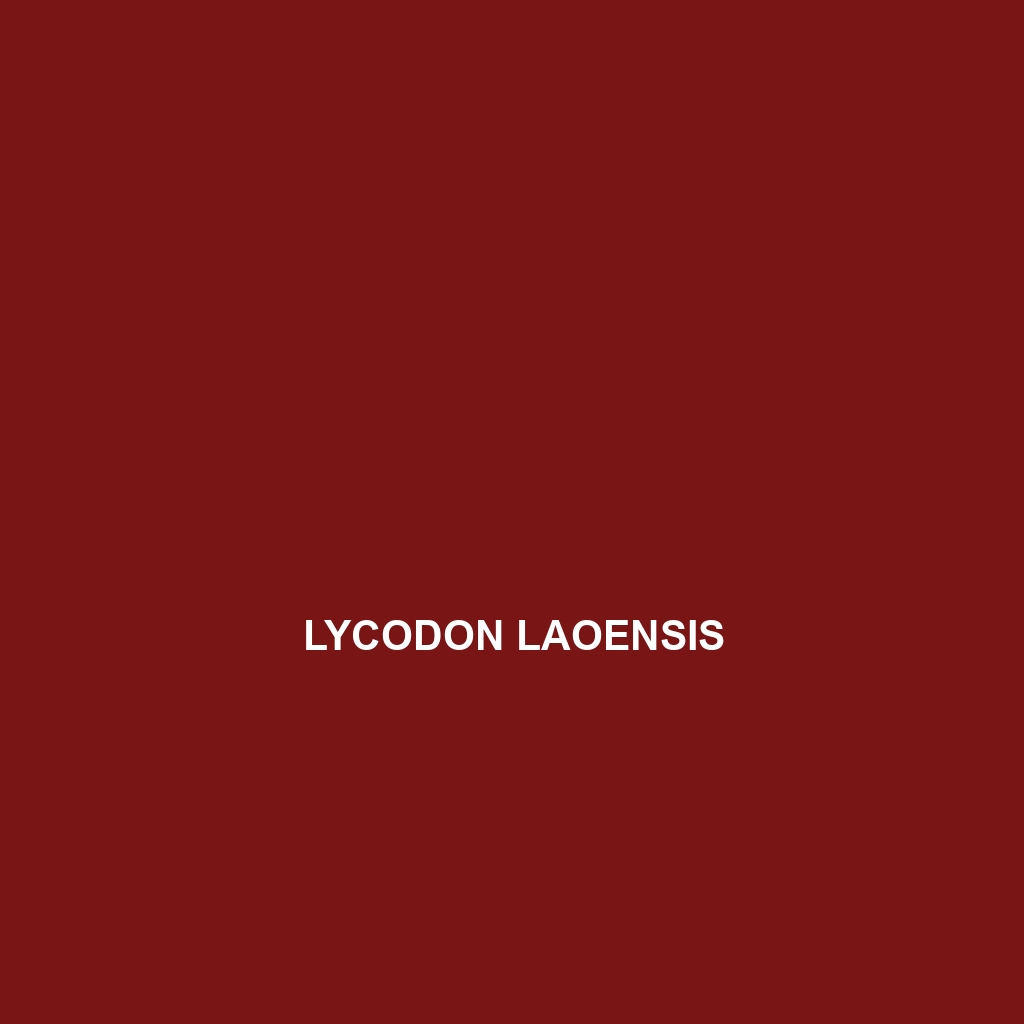Common Name
Lycodon laoensis
Scientific Name
Lycodon laoensis
Habitat
Lycodon laoensis, commonly known as the Laotian wolf snake, is primarily found in the lush, humid regions of Southeast Asia. This species thrives in diverse habitats including rainforests, temperate forests, and sometimes savannas. The Laotian wolf snake is predominantly located in Laos but can also be spotted in neighboring countries such as Vietnam and Thailand. The species demonstrates a preference for areas rich in vegetation, where it can effectively conceal itself from predators and prey alike. Typically, these habitats provide a warm, humid climate that is essential for its survival.
Physical Characteristics
The Lycodon laoensis features several distinct physical characteristics that make it unique among snakes. This medium-sized snake can grow up to approximately 1 meter (3.3 feet) in length. It has a slender, elongated body that is well-adapted for navigating through dense foliage. The coloration of the Laotian wolf snake is notably variable; it typically displays a mix of brown, black, and yellow scales, which provide excellent camouflage in its natural habitat. Notably, the young exhibit brighter colors, which may serve as a protective mechanism against potential threats. Additionally, its triangular head and large eyes contribute to its predatory efficiency.
Behavior
The Lycodon laoensis exhibits a variety of intriguing behaviors that make it a subject of interest among herpetologists. This species is primarily nocturnal, meaning it is most active during the night when it hunts and explores its surroundings. During the daytime, it can often be found resting or camouflaged among leaves and debris. Social interactions among these snakes are minimal; they are generally solitary creatures. Mating rituals typically occur during the wet season, with males often engaging in courtship displays to attract females. Interestingly, the Laotian wolf snake is known to mimic the appearance of venomous snakes as a defense mechanism against predators.
Diet
The dietary habits of Lycodon laoensis categorize it as a carnivore, primarily feeding on small vertebrates and invertebrates. Its diet mainly consists of lizards, frogs, and small mammals. The snake employs a constricting technique to immobilize its prey before consumption. The Laotian wolf snake’s keen eyesight and excellent sense of smell facilitate effective hunting, allowing it to locate prey even in low-light conditions. Due to its ability to adapt its feeding patterns based on available food sources, it is considered a flexible predator.
Reproduction
The reproductive cycle of Lycodon laoensis is an interesting aspect of its biology. Mating typically occurs during the rainy season, which enhances survival rates for the offspring due to favorable environmental conditions. Female Laotian wolf snakes are known to lay clutches of approximately 5 to 12 eggs, usually in concealed locations such as under leaf litter or in small burrows. The incubation period lasts around 60 to 70 days, after which the hatchlings emerge fully formed and capable of independent survival. Parental care is minimal, with females often abandoning the eggs shortly after laying.
Conservation Status
As of the latest assessments, Lycodon laoensis is categorized as Least Concern by the International Union for Conservation of Nature (IUCN). While it is not currently facing immediate threats to its population, habitat loss due to deforestation and urbanization poses significant risks. Conservation efforts are crucial in monitoring its populations and habitats to ensure they maintain a stable existence. Local initiatives aimed at preserving forests and natural habitats will also benefit the long-term survival of this species.
Interesting Facts
Several unique facts make the Lycodon laoensis stand out. Notably, this species exhibits remarkable mimicry, adopting the coloration and patterns of more dangerous snakes to deter potential threats. Furthermore, the Laotian wolf snake is adept at surviving in diverse environmental conditions, showcasing its adaptability. The species is also often found in the vicinity of water sources, which is unusual for many snake species, highlighting its unique ecological needs.
Role in Ecosystem
The Lycodon laoensis plays a significant role in its ecosystem as both a predator and prey. As a predator, it helps regulate populations of small mammals, lizards, and insects, maintaining ecological balance. Conversely, it serves as a food source for larger predators, contributing to the biodiversity of its habitat. The presence of healthy populations of Laotian wolf snakes indicates a well-functioning ecosystem, where species interactions, including those involving predators and prey, are balanced.
